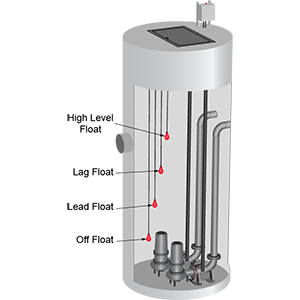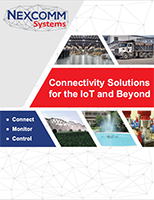What is a Wastewater Lift Station?
A wastewater lift station is a pumping station that moves wastewater from a lower elevation to a higher elevation. Raw sewage flows through sloped underground pipes using gravity. Digging trenches to slope pipes from homes all the way to a treatment plant is prohibitively expensive. So large wells are built periodically through the system to collect the wastewater. Pumps at the bottom of the wells lift the sewage to discharge pipes near the surface so that it can flow downhill to the next station. The sewage can go through several wastewater lift stations on its way to a treatment plant with the stations getting larger closer to the plant to handle the aggregated volume of the smaller stations further out.
How Does a Wastewater Lift Station Work?
The most common type of wastewater lift station is called a wet well. This is a pit that holds wastewater until it reaches a threshold level where there is enough wastewater to pump out.

The level is detected by simple float switches. As the wastewater level rises, it turns on a float switch. Simple control logic in a panel can control the pumps. When the lead float switch turns on, one pump is activated until the off float switch turns off. If the lag float switch turns on, the second pump is activated. If the high level float switch turns on, then a red light is turned on and a horn sounds indicating an issue that needs to be addressed.
Wastewater Lift Station Monitoring and Maintenance
Routine servicing of the pumps, motors and float switches is important to ensure their good operation. Remote electronic monitoring of the stations catches issues before they become serious problems. This includes recording the float switch activations to ensure the pumps are turning on and off correctly and that the station is keeping up with the volume of wastewater. Monitoring the motor currents can show that they are operating correctly or that something is wearing out or a pump is clogged. Monitoring power to the station can detect interruptions, noise or other conditions that could impact the electronics or motors.
The key is that the service provider responsible for the maintenance of the wastewater lift station is informed of a problem well before an overflow event. This gives them time to service the station and correct any issues before it becomes a serious problem.
Wastewater Lift Station Monitoring Solutions
SCADA systems have been used to monitor wastewater lift stations for decades. However, these are typically older systems using dedicated radios that drive up cost. As the Internet of Things (IoT) has exploded over recent years, the cost of technology to connect Things to the Internet has plummeted while becoming easier to use and deploy.
Nexcomm Systems has a complete monitoring solution for wastewater lift stations. This consists of multiple hardware options depending on the complexity of the station and the level of information desired, as well as a complete cloud service with reporting and alerting built in.
Connectivity solutions for the IoT and beyond
Nexcomm Systems provides the complete solution for connecting devices to the cloud for monitoring and control. We offer wired and wireless sensor hubs, cellular gateways and airtime, as well as cloud services for provisioning devices, data storage, visualizations, and reports. With systems tailored to different applications, environments and price points, we are a one-stop shop for remote monitoring and control.



